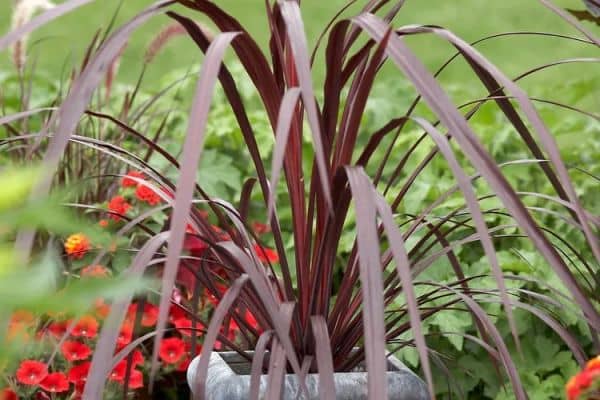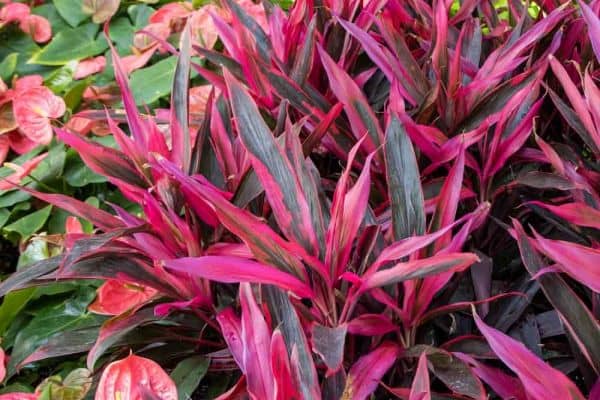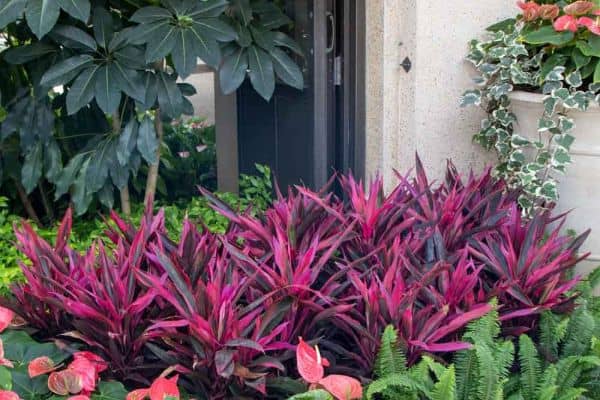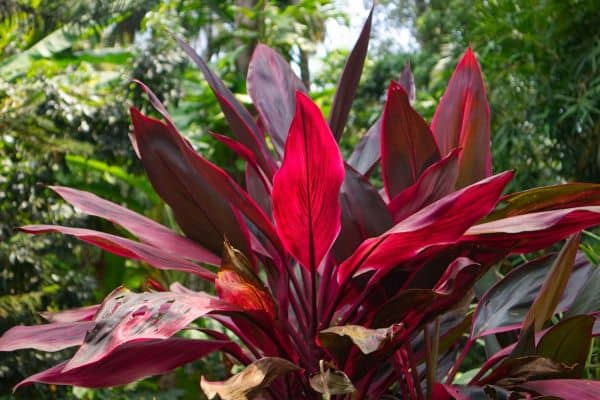Cordyline is a flowering plant that lies in the family Asparagaceae and subfamily Lomandroideae. They are available in different shades like green, bronze, and purple.
Today in this section we will learn how to plant and care for the cordyline with a complete guide:
How and When to Plant Cordyline
Before you plant cordyline in your garden and yard you can put a layer of compost or aged manure to provide soil structure, water retention, and nutrients so the garden soil will do the job perfectly.
You need to dig a hole that should be twice as wide and the same depth as the plant’s root ball also remember to keep the soil nearby to refill the hole. Then you will have to get the plant out of the nursing pot to do so you can gently roll the pot around putting firm pressure on the sides of the pot and it will come out of the pot.
Remember when getting the plant out of the pot, do not damage the plant stems and when it comes out you should loosen any pot-bound roots and cut any girdling roots. After that, you can backfill the hole with soil from the hole and gently press down the soil with your hands so the air pockets will be removed.
After that, you need to water the cordyline well until it is settled, and remember to space young plants as they grow large when they mature.

Cordyline Care Tips
Care of a plant is different as their species and the area you live in. But we will make it easy for you as we have mentioned all the things a cordyline plant needs to be taken care of. So here is the list and explanation of how you can care for cordyline plants indoors and outdoors.
1. Light
As for light cordylines require bright and filtered light for them to grow properly. In nature or their native habitat, they get light that will be filtered by tree-canopy. But modern cultivars and hybrid ones can survive well in full sun and can get more vibrant colors.
Remember that if you are in an area with intense summer sun you should keep the plant in some afternoon shade as excessive sun can cause leaf browning. But when they are planted indoors you should provide them with as much bright light as possible for a minimum of six hours daily or you can use a grow light to provide them a light source.
2. Soil
As for soil cordylines require well-draining, rich, and neutral to slightly acidic soil. For container plants good-quality potting soil will do a great job. But for ground planting you should add a mulch of weeds, and some compost before planting, and you also have to work on soil moisture control.
3. Water
As for water cordylines will require water during the first year of the plantation but after they are settled then you can water them during dry seasons or they can even survive and thrive well with rainfall. As for indoors, you can let the soil dry out slightly between watering them.

4. Temperature and Humidity
As for water temperature and humidity, cordylines require warm temperatures and they enjoy higher humidity levels. Remember that you will have to keep them indoors during chilly autumn frost and set them outdoors water the spring warms up.
If you have planted them indoors you should regularly mist the plant or add a plant humidifier to keep the humidity high.
5. Fertilizer
As for water fertilizer, cordylines require slow-release granular fertilizers and you can top-dress annually with compost too. Remember that they can adjust in any suitable general-purpose fertilizer biweekly when watered and remember to use fertilizer during the spring season also remember to use fertilizer amount as the fertilizer description.
6. Pruning
As for water pruning, cordylines require less of it all you have to do is remove old, less attractive leaves, limit size, renew vigor, and lower growth. But a large plant may need a little more pruning as the canes are thick and woody.
7. Potting and Repotting
As for water potting and repotting, cordylines require good-quality potting soil mixed with some sand and perlite for good drainage. For them, you can use large containers with drainage holes as they are best for growing cordyline.

More About Cordyline
| Common Name | Cordyline, Hawaiian ti plant, good luck plant |
| Botanical Name | Cordyline terminalis |
| Family | Asparagaceae |
| Plant Type | Evergreen shrub |
| Mature Size | 3-6 ft. tall and wide |
| Sun Exposure | Full-sun, partial-sun |
| Soil Type | Well-draining |
| Soil pH | 6.0-6.5 |
| Bloom Time | Summer |
| Flower Color | White, pink, lavender |
| Hardiness Zones | 9-11 (USDA) |
| Native Area | Pacific Islands, Southeast Asia |
| Toxicity | Highly toxic to dogs and cats2 |
FAQs
Q. How do you care for Cordyline plants outside?
You will need rich, well-drained high-quality potting mix and warmer weather to care for cordyline outdoors.
Q. Are Cordyline plants harmful?
Yes, cordyline plants are toxic and harmful to pets like dogs and cats so remember to keep them out of your pet’s reach.
Q. What is the best fertilizer for cordylines?
For cordyline, slow-releasing fertilizer is best for their growth.
Also Read: Heavenly Blossoms: Transform Your Outdoor Space with These 10 Spectacular White Flowering Trees
